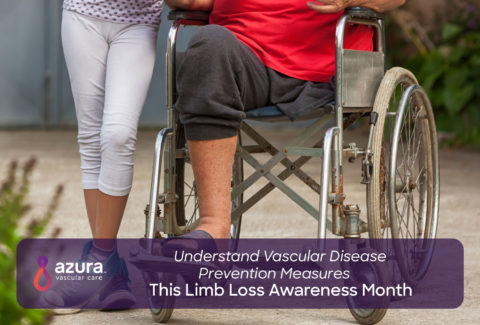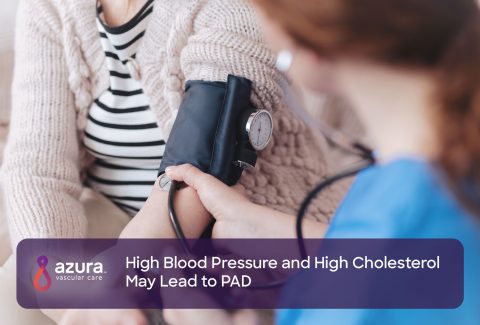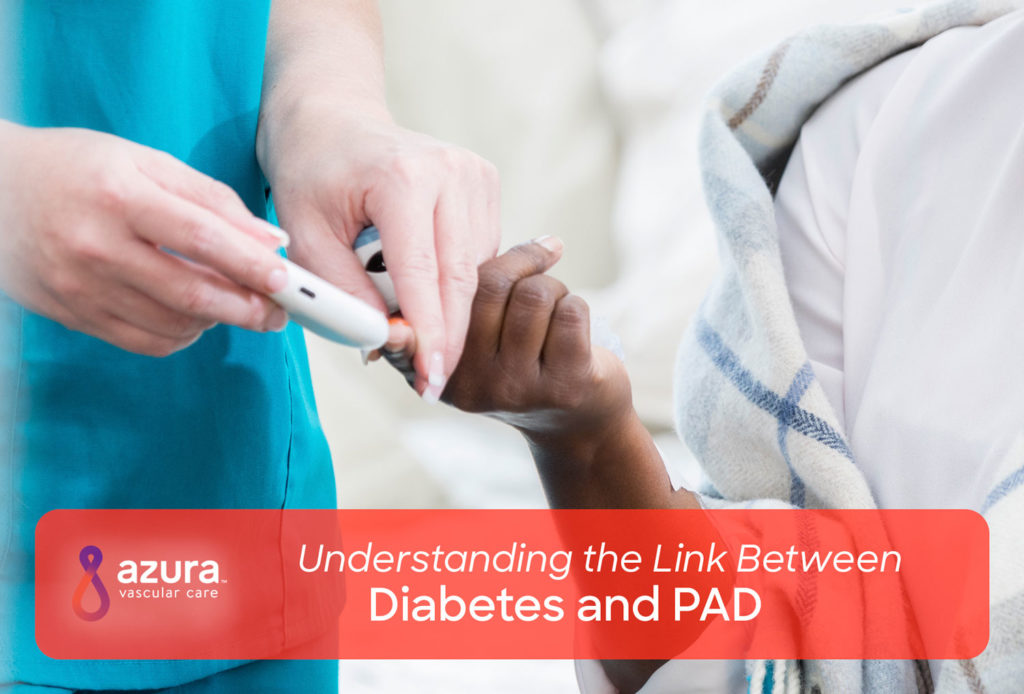
Diabetes, according to the Centers for Disease Control and Prevention (CDC), is the seventh leading cause of death in the United States. (i) Uncontrolled diabetes can cause significant health issues.
People who have diabetes do not make enough insulin in their pancreas to metabolize food for energy. This causes sugars to build up in their blood and leads to complications. The two most common diabetes types are type 1 and type 2. About 10 percent of all diabetes diagnoses is Type 1 diabetes, previously called insulin-dependent diabetes mellitus or juvenile-onset diabetes. Type 2 diabetes, previously known as noninsulin dependent diabetes mellitus, is the most common type, and many of the risk factors for this disease are almost identical to the risk factors associated with peripheral artery disease (PAD). (i)
People with diabetes are at an increased risk for developing PAD, which occurs when the peripheral arteries—those that do not supply blood to the heart and brain—become narrowed by an accumulation of fats, cholesterol, and other substances, a condition known as atherosclerosis. People with diabetes are more likely to develop atherosclerosis, which can progress to PAD.
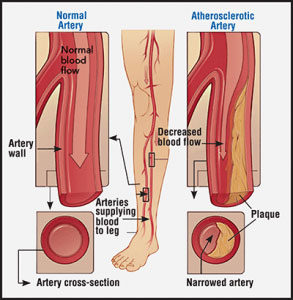
Untreated PAD and uncontrolled diabetes can lead to heart attack, stroke, and limb amputations. It is important to understand the connection between diabetes and PAD and what you can do to lower your risk for both conditions.
The Diabetes and PAD Connections
There are several diabetes and PAD connections—both in risk factors and in complications.
Risk Factors for Type 2 Diabetes and PAD
Risk factors for developing type 2 diabetes, as noted, are almost identical to the risk factors associated with atherosclerosis (ii) and PAD, and include:
- Obesity
- Inactivity
- Smoking
- High blood pressure
- High cholesterol
- Family history
Complications of Diabetes and PAD
A common complication that may develop for a person with diabetes and also a person with PAD are sores that don’t heal properly. It is worth noting that non-healing sores associated with diabetes and PAD are slow to heal in both diseases. This may suggest that one disease exacerbates the other.

In addition, people with diabetes who also have PAD are at increased risk for developing critical limb ischemia (CLI), which is a severe form of PAD that can lead to amputation. Also, if left untreated, these two diseases increase your risk for heart attack, stroke and reduced quality of life.
Making Lifestyle Changes Can Help Both Diabetes and PAD
The good news when considering the diabetes and PAD connection is that making lifestyle changes to help with one disease can also lower your risk factors for developing the other. Lifestyle changes can slow progression of PAD and relieve the serious complications associated with diabetes. Lowering your risk for developing PAD and diabetes may be achieved with the following lifestyle changes:
Before you start a diet or exercise program, always consult with your doctor.
Extra Precautions for Diabetics
Although diabetes and PAD share risk factors and many of the same lifestyle changes are recommended to lower these risks, those already diagnosed with diabetes should take a few extra precautions.
For people with diabetes, controlling insulin levels is critical to avoiding complications like PAD. If diet and exercise are not working to control insulin levels, it is important to make an appointment with an endocrinologist.
Also, if you notice leg pain when walking or develop diabetic foot ulcers that are not healing, it is important to see your doctor right away to avoid amputation due to diabetes and/or to rule out PAD.
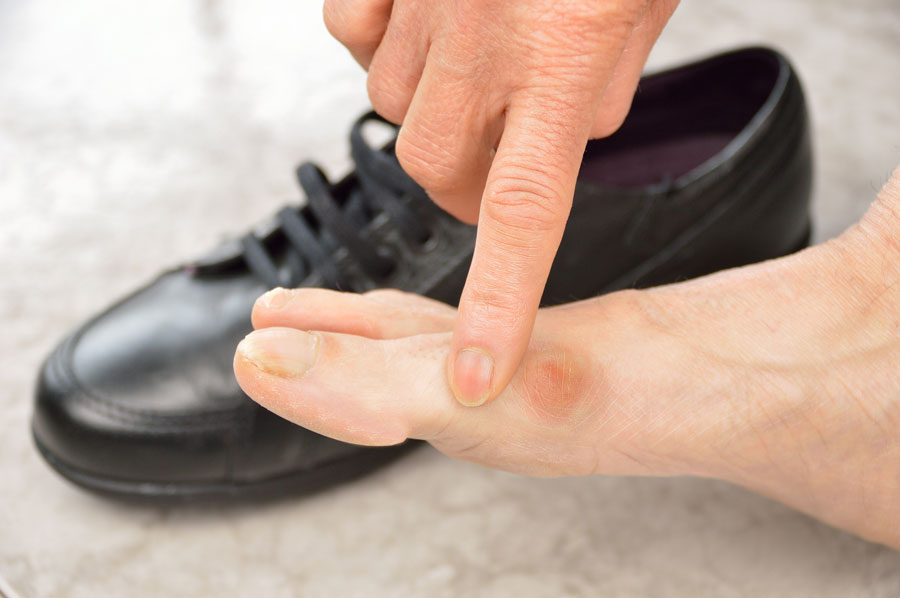
It’s important to remember that since these diseases overlap in both risk factors, such as those to reduce blood pressure and cholesterol, risk reduction in both diseases is based on healthy lifestyle choices and prevention.
If you suspect that you have PAD, call 866-534-3627 to schedule an appointment with a vascular specialist.
Sources:
(i) Centers for Disease Control. Diabetes. Accessed October 22, 2018, from https://www.cdc.gov/media/presskits/aahd/diabetes.pdf
(ii) American Heart Association. Peripheral artery disease and diabetes. Assessed October 22, 2018, from http://www.heart.org/en/health-topics/diabetes/why-diabetes-matters/peripheral-artery-disease–diabetes

